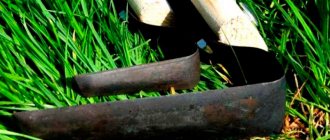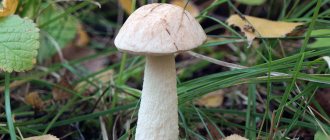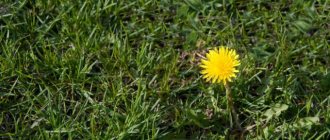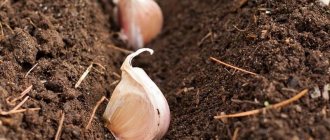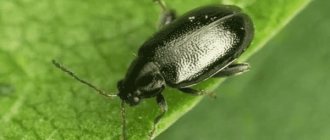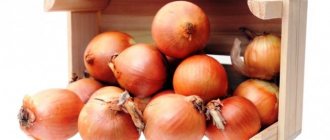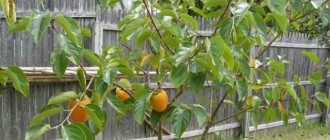Mechanism of action of tar
Tar is not such a harmless substance. It must be applied skillfully and on time, clearly understanding the mechanism of action of the product on pests and plants.
Pest Control
Birch tar acts as a repellent, but is not an insecticide. The product repels insects with a strong unpleasant odor without killing them. Once the scent wears off, the pests may return.
The use of birch tar in gardening and gardening is effective if the processing time is calculated correctly. Often, it is not the insects themselves that pose a danger to plants, but their larvae or nymphs. By scaring away pests during the egg laying period (it does not last long), you can protect the plantings from many troubles. The product protects vegetable and garden crops in the country and reduces the insect population.
The unpleasant smell of tar quickly disappears; a person stops feeling it after a few days. But many insects have a more sensitive sense of smell.
For a period of 30 days or more, a specific smell will repel:
- mice;
- moles;
- mole cricket;
- gypsy moth.
Less than 30 days in the absence of rain, the tar solution acts on:
- Colorado potato beetle;
- phytophagous flies (onion, cabbage, carrot);
- beetles (sawflies, wireworms);
- pest butterflies:
- cabbage whites;
- gooseberry moth;
- hawthorn;
- plum and apple moth.
A single application is usually enough to prevent pests from laying eggs.
Unfortunately, tar is ineffective as a remedy for:
- aphids;
- ants;
- weevils;
- larvae of some other beetles.
These insects do not have very sensitive olfactory organs, the smell affects them for several days - you need to constantly update the source of the “aroma”, or use other means.
Protection from diseases
Birch tar is rarely used in the garden or garden to combat diseases, although it has beneficial properties for plants:
- wound healing,
- antimicrobial,
- antiseptic.
Plants are treated against powdery mildew:
- a single spraying will serve as a preventive measure in rainy summers;
- three-time treatment, with an interval of 7-10 days, will help cope with advanced disease.
To prevent late blight, the soil is shed before planting some crops:
- potatoes;
- tomatoes;
- other nightshade crops.
This destroys pathogenic spores in the ground, but cannot guarantee that the fungus will not penetrate into the garden bed from a neighboring area.
Toxicity to humans and plants
It is impossible to say that tar is absolutely harmless - it contains:
- benzene;
- guaiacol;
- cresol;
- xylene;
- toluene;
- phenol.
All of them are toxic and have a negative effect on humans. Of course, the highest concentration of harmful substances is in sapropel tar. The drug made from birch bark and wood contains much less of them. The purest, birch bark tar, is expensive, is usually used in the medical and perfume industries, and is rarely used in the garden. It is the least effective against pests and has a weak odor.
Concentrated birch tar, which is a thick black liquid with a greenish or blue tint and a strong strong odor, has a hazard class of 3 (moderate). Most modern drugs used on private farms (for example, copper sulfate) have a similar class. You can work with the drug only with gloves and a petal-type respirator.
After dilution, toxicity is reduced to class 4 (low hazard). The respirator can be replaced with a gauze bandage, and people who are not particularly sensitive take off their gloves - the solution that gets on the skin promotes wound healing.
It makes no sense to greatly dilute tar to reduce toxicity - reducing the concentration of the substance makes the odor weak. Processing plants becomes useless.
The statement fully applies to birch tar: in large concentrations it is poison, in small doses it is medicine.
Advantages and disadvantages
The use of birch tar to protect gardens and vegetable crops from pests has advantages and disadvantages.
| pros | Minuses |
|
|
Tar does not dissolve well in water. To prepare the working mixture, it must first be combined with alcohol or alkali. The best method is to dilute the substance with a soap suspension.
It makes no sense to make solutions with different concentrations of the working substance for use on strawberries, apple trees or potatoes. You can make a mixture according to one recipe, and treat the entire area from mice, harmful beetles, butterflies, spider mites, slugs, moles, ants, hares.
Comment! It is better to use ordinary birch tar in the garden, rather than birch bark (expensive and ineffective) or sapropel.
Classic solution
First, 50 g of soap (laundry or tar) is grated and soaked in warm water. Then pour in 2 tablespoons of tar and stir well. Dilute in a bucket of water.
This solution can be sprayed on plants, soil, and soaked in mulch and rags.
A universal, potent remedy
The following mixture helps against almost all pests:
- water – 10 l;
- concentrated solution of laundry soap – 1 glass;
- tar - 2 tbsp. l.;
- ammonia - 2 tbsp. l.;
- iodine – 1 tsp;
- pine oil (any) – 1 tsp;
- boric acid – 0.5 tsp.
The mixture must be stirred well. Dilute a half-liter jar of the mixture in 10 liters of water and use it on all crops as a universal remedy against pests, late blight, and powdery mildew.
Comment! The concentration of each substance in the working solution will be so low that even flowering plants can be treated with it.
Methods of application
You cannot spray garden and garden crops against pests with tar after the formation of buds. It is better to hang the bowls or place rags soaked in the smelly substance between strawberry or potato bushes, and attach them to tree branches.
There are many ways to use tar in the garden. Often you have to rely on the advice of summer residents and gardeners. Scientists and agricultural institutes remain silent regarding the use of tar in agriculture.
Processing of planting material
When planting potatoes, prepare a classic tar solution, pour the hole, and soak the tubers for 20-30 minutes. The drug is used to protect potatoes from wireworms.
Onions are treated differently. The sets are placed in a plastic bag, a few drops of pure tar are added, tied, and shaken for a long time. The thick liquid is evenly distributed over the covering scales and repels pests for a long time with an unbearable odor.
Use in the garden
Dill, parsley, lettuce, and other greens used for food are not sprayed with tar solution. The remaining crops are watered from a watering can or treated with a broom. This way you won’t have to constantly clean the spout of the garden sprayer, and the liquid will be constantly agitated.
After flowering and the appearance of ovaries, you can shed soil between the rows. The result will be similar. It is even better to mulch the ground under crops whose fruits do not touch the soil with rotted sawdust soaked in a tar solution - this will protect the plants from pests and weeds and retain moisture.
Use in the berry garden, in the garden
At the beginning of the growing season, bushes and small trees are treated against pests with a broom. As an option, open bottles with birch tar or rags soaked in the working solution are hung on the branches.
In the middle of the season, rags soaked in the substance are tied to sticks driven in at a distance of 1-1.5 m from each other. Periodically, the material will have to be moistened in a tar solution.
This is how strawberry pests are controlled. The berry bushes are not tall; in private plots the crop is often grown using the carpet method. To avoid using chemicals, mole crickets are treated with rags hung at a low height and soaked in a tar solution.
Repelling warm-blooded pests
Mole holes are simply plugged with tar-soaked rags. To prevent mice and hares from gnawing the bark of fruit trees in winter, they are coated with the following mixture:
- water – 8 l;
- lime – 1 kg;
- cow manure – 1 kg;
- tar - 3 tbsp. l.
Some gardeners advise using “catching belts” - pieces of fabric soaked in tar solution, tied around the trunk. But reviews about them are contradictory - from laudatory to abusive. On trees with “catching belts” left for the winter, the bark may peel off. This is likely due to the concentration of the working solution and how tightly the material is pulled.
Tar obtained from birch occupies an intermediate position between chemical plant protection products and harmless but ineffective folk methods. Whether to use it on the site is worth weighing the pros and cons.
Birch tar - how to use it against pests
The smell of tar lingers in the ground for 20-23 days; on the surface, the smell evaporates faster, so the aboveground part of the plants is re-treated.
Onion, carrot, cabbage fly . Treatment is carried out once every 10 days with moderate precipitation. If there has been heavy rainfall, treatment is carried out more often.
Wireworm and mole cricket . The working solution is applied and infused for 1 hour. Then the potato tubers are soaked in the solution before planting. Or the grooves (holes) are sprayed with the solution before planting the tubers.
Colorado beetle. When the tops grow on the potatoes, the treatment is carried out by spraying the solution. Potatoes with moderate rainfall are sprayed 3-4 times per season. If it rains heavily, of course, treatments need to be carried out more often.
Strawberry weevil. Birch tar is an excellent remedy for repelling weevils on strawberries. The first treatment is carried out immediately after the snow melts and the bushes are treated after winter. The second, when the strawberries threw out their flower stalks and they had not yet opened. And the third is carried out when the buds on the peduncles begin to open.
Spider mite . Spider mites, which are especially active in hot, dry weather, cannot resist the strong aroma of birch resin. The pest is tiny in size, but causes enormous damage to garden and vegetable crops.
the sawfly can damage a wide variety of plants: currants, gooseberries, apple trees, plums, pears, etc. But all varieties of this dangerous insect quickly retreat away from plantings that smell of tar.
Aphid . All gardeners know firsthand how quickly insects turn young shoots into ugly squiggles in any weather. However, the malicious insect has a weak point - it cannot stand the smell of birch resin.
Using sawdust
You can place sawdust in the spaces between the rows, which are soaked in a resin solution. To do this, dilute 3 tbsp per 10 liters of water. l. powdered laundry or liquid soap, stir, add 2 tbsp. l. tar, stir the solution well again, and then soak in the sawdust and place them between onions, carrots, and cabbage. True, this method has disadvantages.
After watering and rain, the efficiency will decrease, and also when loosening the soil, sawdust is embedded in the soil, and then it is necessary to add it again.
Using rags soaked in tar solution
Unnecessary old rags (rags) are soaked in a tar solution and wrapped around a peg, which is stuck into the soil between plantings. The smell repels flies and cabbage butterflies; they do not land on the plants, which means they do not lay larvae.
You can also lay out rags soaked in the working solution on the beds. To do this, take an unnecessary rag, soak it in the solution, or simply drip the product into it in several places. Then place this rag between the rows. When watering or loosening the soil, the rag is removed, and after finishing the work it is placed again in the same place. You can add another drop of the product to enhance the smell.
Unpleasant odor for rodents
What smell mice are afraid of has been determined by people through observation and trial and error. During the tests, it became known that rodents cannot tolerate strong odors. They repel mice with pharmaceutical preparations, plants, essential oils, and flammable liquids.
Singed wool
If mice have settled in the house for a long time and are not going to move out, you can use one effective, not very humane method. Catch a mouse, set the tail on fire, release it. The frightened animal will run into the hole to its relatives. Rodents cannot stand the smell of burning wool. The mouse itself will drive away its relatives.
The smell of a cat's burnt fur repels rodents even more. Trimming your pet's hair slightly will create a nightmare for rodents. If there is no animal in the house, you can set fire to an old woolen product, or a skein of thread, and put it in a hole.
On a note!
How to scare away mice if there is a cat in the house, even the laziest one, the question should not arise. Cat urine is the best mouse repeller. No one can stand its pungent smell, especially rodents. Also, a cat can eat a mouse if it catches it.
Plants
Plants to repel rodents
Some plants not only repel rodents with their smell, but also affect your well-being. Folk remedies for mice can be much more effective than professional ones.
- Sagebrush. The grass gives off a strong odor that mice cannot tolerate. Twigs of a fresh plant are laid out in places where rodents have been seen, in burrows, if the location is known. The result is more effective if the room is smoked with grass. They set fire to wormwood branches and walk around the apartment. Smoke penetrates into the smallest cracks and reaches rodents anywhere. Instead of wormwood, you can use tansy. The effect is similar.
- Peppermint for mice is one of the most effective ways to control rodents. For humans it is a safe and even useful remedy. Pick fresh leaves of the plant and place them around the perimeter of the room. If mice have settled in the apartment, you can create an aura of a persistent minty smell using essential oil. Drop peppermint oil onto a candle and light it. A pleasant aroma will fragrant throughout the room, smell for a long time, and drive mice crazy.
- Grouse bulbs. The root of the flower has an unpleasant onion odor, which causes fear in rodents.
- Blackroot. Affects the nervous system of rodents. The mice hear it several meters away and try to quickly hide. Contact with this plant is fraught with severe mental disorders. The smell follows the pest everywhere, gradually driving it crazy.
- Swamp wild rosemary. Contains toxic oils. After contact with the plant, mice receive a lethal dose. The remaining individuals run away from him wherever their eyes look.
- Chamomile. Pyrethrum is an effective remedy against many pests and is safe for humans. A tincture can be used. According to reviews, the effect is even better.
If it is impossible to find herb against mice, you can buy a mixture or extract at the pharmacy, it will also work. But it should be scattered in larger quantities.
In addition to plants, you can use fruits - orange. The persistent orange aroma of the zest lasts a long time, but does not cause any unpleasant sensations in humans. Scatter the peels around the room. You can also add garlic cloves.
Liquids with a strong odor
Products with a strong odor
You can repel mice using effective products with a strong, pungent odor.
- Ammonia. Pour it into a saucer, place it near the hole, wipe the baseboards, floor, and places where rodents have been spotted. Prepare a solution. 10 ml of the drug is poured into 1 liter of water. Wipe down furniture. Mice don't like these smells and try to stay away.
- Vinegar for mice is one of the most effective remedies available. It’s always available on the farm, and if you don’t have it, you can buy it at the nearest grocery store. Pour into a saucer, as is the case with ammonia, or dilute in water. Use an intolerant vinegar solution for washing floors and treating furniture. Concentration does not play a special role. The main thing is that the smell is persistent. Repellent helps only in this case.
- Mice are afraid of the smell of tar. But it is better to use it in a non-residential building, in a country house, or when you can spend the night in another place. Wet a rag and place it in places where mice like to be. The smell of kerosene, gasoline, solvent, and machine oil has the same effect.
- Bleach and the chlorine smell drives away all pests. Floors should be washed several times a week. Detergents containing it are suitable.
On a note!
Boric acid from mice has no odor and is therefore dangerous for rodents. The poisonous substance is scattered on the floor surface. When contacting the poison, the animal gets its fur dirty. Trying to get rid of tongue contamination. The poison enters the stomach. To speed up this process, boric acid is mixed into food - bait is prepared. They use flour, grain, cereals, seeds, sausage, fried lard, smoked sausage, and bread crust. This method of controlling rodents does not involve repelling them, but attracting them to poisonous food.
Pepper can be used to repel. Scattered in places where pests like to run. Pepper on the skin of the paws causes a burning sensation. Lime has the same property.
Useful video
How to get rid of mice with birch tar in the video below:
- Read all comments from the beginning:
- 1
- 2
- 3
- 4
- 5
- 6
- 7
- 8
- 9
- 10
- 11
- 12
- 13
- 14
- →
Discussion in our VKontakte group:
Elena Letnyaya:
They also don’t like stove ash and burnt wool.
Tatyana Arkhipova:
an ordinary mousetrap slams quickly, and even if only the tail slams, the mouse still instantly dies of fear. But what to do with a live mouse from a bottle? Yes, this is an old proven method, but I caught mice this way only once - because what to do with a captive. those frightened beady eyes.
Linda Staff:
If we use music or noise, our neighbors in the dacha will catch us. If we use poison, the mice will bring it to our table; if we frighten with smells, then I will have to go to the city myself. If we catch it in a mousetrap, it will crush the mouse (fairy..) , and often it breaks down. All that remains is not to store seeds or supplies in the winter dacha (then the mice gnaw everything), to seal all the holes in the walls. And we also put 30x30 cardboards on the floor in each room for the winter, on which we put a ring from special glue (sold) Place a piece of sausage or smoked lard in the middle of the ring and that’s it! We don’t see horror films anymore. In the spring we throw away the cardboard
Elena Letnyaya:
And I have rabbits, sometimes the grain spills out of the feeder. As soon as the rabbits arrived, Larisa immediately showed up, the Rat Death bags are helping so far.
Irina Strelkova:
they say that mice are repelled by the smell of wormwood - place its branches everywhere
Elena the Beautiful Rose:
Against mice I use birch tar, elderberry, mint, green granules in bags (I don’t remember the name). I used rat poison once and for all.
Birch tar in gardening and gardening - advantages and disadvantages
The natural remedy does not cause harm to the human body. It has been used for many centuries for household purposes, non-traditional methods of treatment, cosmetic purposes, cultivation of summer cottages, and vegetable gardens.
In addition to all its properties:
- antiseptic;
- anthelmintics;
- antimicrobial.
The properties of birch resinous substance are due to its rich structure.
It is essentially a repellent and its main task in gardening is to repel insects. It should be noted that we are not talking about destruction. It is valuable that, having irrigated the plants, there is no doubt that insects will not have the desire to lay eggs on foul-smelling leaves.
Compared to pesticides, birch composition clearly wins in gardening:
- it is harmless to humans;
- effective in repelling many pests in gardening, gardening, the effect is not limited to repelling insects;
- effective against rodent attacks;
- Insects do not get used to it;
- They cannot kill, but can only scare away;
- not difficult to use;
- you can choose a convenient processing method without even touching the plant;
- remains effective for a long time (up to a month).
The substance also has some disadvantages that should also be taken into account. Birch tar cannot be applied directly to fruits, edible fragments of vegetables and fruits.
There is a high probability that if the product gets on the surface, it will affect the taste and smell of the crop. The components of the resinous liquid have a cumulative effect.
Let's celebrate! In addition, bees and other beneficial pollinating insects also lose interest in plants due to the unpleasant odor, so pollination does not occur. The consistency of the product is not uniform and causes clogging of the sprayer, and if it accidentally gets on clothes, it is impossible to wash off birch tar.
Features of using tar soap
Gardeners know that to get complete relief from pests, they need to use tar soap, taking into account several features:
- Purchase it without any additives.
To learn the composition, there should be nothing except a soap base and birch tar.
- Grind using a grater.
It is allowed to cut into cubes of 2 - 3 centimeters with a knife.
- Combine with the right ingredients in strict proportions.
- Fill with warm water.
Note: a piece, even finely grated, will not completely dissolve in cold water.
Using soap against aphids
Most garden plants face aphid attacks during the summer season.
Treatment of bushes with products containing tar must follow special rules:
- The leaves are sprayed with the prepared solution.
- Part of the substance flows into the roots.
- The stems are processed.
Recipe against aphids with ash:
Take:
- Water – 8 liters.
- Ash – 500 grams.
- Garlic – 30 grams.
- Tar soap – 1 piece.
Good to know! The garlic is peeled and crushed as much as possible. Afterwards it is mixed with ash and placed in water. Next, you need to add a crushed bar of soap to the composition. After 3–4 hours, the solution must be filtered and the damaged bushes treated.
Using soap against ants
It is difficult to cope with ants, since the pests remain undetected for a long time, but at the same time they multiply quickly and actively damage plants and crops.
You need to use tar soap against such insects according to the following rules:
- Pour the prepared solutions into anthills.
- Spray damaged bushes with products.
- Treat leaves and stems.
Recipe against ants with soda. For preparation you need:
- Soda – 25 grams.
- Crushed piece of tar soap - 25 grams.
- Water – 2 liters.
You need to mix the ingredients and add water. It is allowed to add 5 – 10 grams of garlic to the composition.
Birch tar in the fight against spider mites
Until recently, it was believed that spider mites are a pest that can exclusively affect greenhouse crops .
However, recently this insect has perfectly adapted to the conditions of open space and began to infect plants in open ground. Most often, the pest attacks young seedlings, thereby preventing them from intensively developing and growing. Therefore, as soon as you see light yellow stripes on the seedlings (they remain as a result of the activity of the queen), immediately treat the affected plants with a solution of birch tar. To do this, dilute 5 tablespoons of an oily substance in 7 liters of water, pour the product into a sprayer and thoroughly treat all plants, including healthy ones, with it.
But it is worth considering that you can get rid of parasites in one go, and you need to treat the back of the sheets , since practice shows that this is where the adult individuals and deposited larvae are located.
The principle and mechanism of action of birch bark tar on the Colorado potato beetle
Thanks to its unique composition, the product has a distinct and persistent odor that many insects and animals with a keen sense of smell cannot tolerate. The Colorado potato beetle is attracted to the aroma of potato tops and other nightshades. Leaves and soil treated with tar will retain an unpleasant smell for the leaf beetle for a long time, which will scare it away from a distance and prevent it from landing on the bush and starting to reproduce. The substance acts in the same way on other pests sensitive to it.
Manufacturing technique
Tar can be obtained from the top layer of birch bark in early summer, but this procedure requires special equipment, experience and time. Therefore, it is better to use ready-made products that can be bought in special shops, garden centers or pharmacies.
To prepare the working solution, you can use tar or tar soap directly. Recipe options are shown in the table.
| № pp | Required Components | Cooking method | Features of application |
| 1. | Tar – 30-50 ml Warm water – 10 l | Tar is poorly soluble in water, so it will stick to equipment. It is optimal to carry out the treatment using a household broom, dipping it into the solution and shaking it onto the tops. You can use a watering can with large holes or a plastic bottle with holes in the lid. | |
| 2. | Laundry soap – ½ piece Clean water – 9 l Tar - 2 tbsp. spoons | Place the pureed soap in 1 liter of hot water and stir until completely dissolved. Pour the resulting mixture into 9 liters of water, pour in the tar and mix thoroughly with a wooden stick. | |
| 3. | Tar soap – 1 pc. Water – 9 l | Heat a liter of water to 50 °C, add coarsely grated soap, mix the soap solution. Add 9 liters of plain water. | You can use a spray bottle or sprayer. |
Spraying equipment is selected depending on the recipe for the working solution.
Processing rules
Treatment of potatoes with tar from the Colorado potato beetle is carried out in 2 stages:
- Pre-sowing prevention.
How to treat pets with tar
Birch tar is widely used in veterinary medicine. Among the indications :
- disorders of the gastrointestinal tract, rumen tympany, infectious diseases of the respiratory system and helminthic infestations;
- treatment of skin diseases - scabies, ringworm, eczema, frostbite, cracked hooves and limb injuries;
- disinfection of livestock premises.
For the treatment of skin diseases, the drug is used in the form of a 10–30% solution. Apply 2 times a day for a course of 1 to 2 weeks, for fungal infections - up to 1 month. In cases of scabies, the ointment is applied warm and thoroughly rubbed into the skin.
As a disinfectant and against fermentation in the stomach, tar is given in the form of a 10% aqueous emulsion to cattle and horses from 10 to 25 g, to pigs, goats and sheep – 2–5 g, to dogs up to 1 g, depending on size and weight. Cats are hypersensitive to tar-based drugs, so they are prescribed extremely rarely.
The use of birch tar in the garden gives good results if you use the product in a timely manner, following the recommended dosages. Then it will not cause damage and will help rid the area of a large number of pests.
How to choose tar?
Birch extract is sold in pharmacies without a prescription. It can also be purchased from sellers on the Internet in larger containers - barrels, canisters. Garden stores often sell this product to combat various pests.
When choosing, you should pay attention to some nuances. There are two types - birch bark and birch tar. Birch is made by pyrolysis of all components of the tree, birch bark is made from young birch bark and is used in cosmetology and for medical purposes.
Let's celebrate! In this way, two substances of different oil concentrations are obtained from one plant species. It is birch that is more saturated and is used for gardening.
How to make birch tar?
The recipe for preparing a natural product is not difficult:
- A hole is made in the bottom of a large metal tub.
- They are densely stuffed with bark, chips and other fragments of birch.
- Seal tightly with a lid.
- A level below, a bucket or pan is dug into the ground to collect the resinous liquid.
- The tub should be located above the pan.
- The top container is lined with firewood and set on fire.
- After 5 hours you can see the tar that has flowed down.
In order to collect about three liters of valuable liquid, about 10 kg of birch components should be distilled.
Preparing tar is an invaluable experience, but it is necessary to understand that in industrial conditions it is possible to achieve a high degree of purification and release a more concentrated and effective component for sale.
An important point is that tar soap is practically useless in gardening due to the low content of the main active ingredient in the structure.
Differences between birch bark and birch tar
These means do not differ significantly from each other. Birch bark tar is prepared from the upper and dried bark by dry distillation. In addition to bark, birch tar may contain branches and logs of other plants. The difference lies in the concentration of aromatic substances. Of course, the purest is considered to be the tar obtained from young birch bark, immediately after cutting down the trees.
Birch tar is a unique and inexpensive remedy that is used to treat many ailments. In addition, the product can be used to treat trees and bushes. This will protect them from pests.
The use of birch tar against mice in the house and garden
This natural remedy can effectively repel rodents and other parasites. There are a number of folk recipes that are very simple to prepare and use, but at the same time very effective.
The easiest way: birch tar purchased at a pharmacy must be poured into small containers (plastic glasses, cut-off plastic bottles can be used) and placed around the house (preferably in non-residential premises, for example, a pantry), cottage or basement.
- A similar method: the substance can be applied directly along the entire perimeter of the above premises. This method is more effective, but there is one drawback: the corrosive smell of birch tar will permeate the entire room for a long time. And if the container with the substance can be removed at any time, then, after applying the substance to the floor or walls, no matter how much I do, the smell will remain.
- To save birch tar, you can mix it with industrial oil (1 bottle of product per half liter of oil). It should be noted that despite the decrease in the concentration of birch tar, its effectiveness in combating rodents remains the same. Using an ordinary paint brush with a long handle (for getting into hard-to-reach places), this oil-tar solution must be used to treat all possible ways mice can enter the house from the outside (vents in the basement and subfloor, cracks in the masonry) and inside non-residential premises (basement, attic) . Similar treatment can be done outside and inside outbuildings.
- To prevent rodents from “eating” the bulbs of tulips and other bulbous plants, gardeners do the following: pour 200 grams of birch tar into a bucket of sand, let it sit for two weeks, periodically stirring the sand for better saturation with the smell, and then, when planting, pour it into the bottom of the hole and a little onto the bulb itself .
- To save fruit trees and shrubs, gardeners use an aqueous solution of birch tar (1 tablespoon of the substance per 10 liters of water). With the onset of cold weather, the tree trunk areas should be mulched with sawdust soaked in a similar solution.
Important. An aqueous solution of birch tar will help cope not only with rodents, but also with a number of other pests in the garden: Colorado beetles, onion flies, sea buckthorn and cabbage flies, cabbage butterflies, sawflies, moths, weevils and even hares.
- Also, when protecting trees and shrubs, you can use another option: soak a medical bandage in birch tar and wrap it around their trunks.
It is better to prevent any disaster than to eliminate its consequences later. An infestation of mice is a problem that can easily be prevented in a safe, humane and economical way - by using birch tar against them .
Tips and recommendations for choosing methods of deratization at home
Measures against rodents should not adversely affect human health, so they are different for different premises.
10 ways to catch a rat in a house or apartment
Living spaces
In rooms where people are constantly present, preference is given to various types of deterrents and traps. Domestic predators can be of great help here.
Before starting a systematic fight, it is necessary to strictly limit the access of rodents to food products, it is necessary to identify places where rodents accumulate, cover up all suspicious holes and cracks with a mixture of concrete and broken glass, check ventilation shafts for the presence of rat nests, and replace the grilles with them. It is very important that rodent control is carried out in all residential areas at the same time.
Animal sheds
In utility rooms where animals and birds are kept, toxic substances, as well as various types of traps, will have to be abandoned. Here, products such as wood ash, fumigation with burnt wool, and burdock scattered on the floor are better suited here.
5 Best Ways to Get Rid of Rats in Your Shed For Good
Attics and basements
In rooms that are rarely visited by people and have a large area, killing rat traps have proven themselves, and potent poisons are also used here.
Sheds and garages
In utility rooms they use strong-smelling substances, traps, and traditional methods of killing rats (gypsum, dry putty, soda). It is possible to use smoke bombs.
Benefits against powdery mildew
Powdery mildew is nothing more than a fungus that likes to parasitize various vegetable crops.
Powdery mildew primarily affects those plants that grow in conditions of waterlogged soil and high air humidity combined with low temperatures. Therefore, if you grow plants in poor-quality conditions, you should at least carefully monitor that spotty plaque does not appear on your plants - this will be the first sign of a crop disease. If this does happen, prepare a solution of birch tar and ash as soon as possible:
- first heat about 10 liters of water;
- then dissolve 1.5 kg of high-quality wood ash in it;
- here we add 4 tbsp. l. tar, mix the solution thoroughly;
- It is necessary to spray with this product using a high-quality spray bottle, not forgetting to regularly clean the device from ash accumulated in small holes;
- It is recommended to treat all plants on the site for preventive purposes;
- It would also be a good idea to spray with a spray bottle or simply spill the soil in the garden.
Tar solution
Tar against aphids can be used in the form of a solution. To prepare it, take 10-15 g of tar and 50 g of tar per 10 liters of water. The solution is thoroughly mixed and used to spray aphid-infested plants before and after flowering. Treatment is carried out using a spray bottle in the evening hours.
A similar solution is prepared from tar soap. In 10 liters of liquid you need to dissolve ½ piece of crushed tar soap and 5 tbsp. l. tar. This composition should be sprayed on bushes or seedlings damaged by aphids, especially carefully treating the lower surface of the leaves.
Action against aphids and ants
Tar soap has become widespread in cosmetology. Girls actively use this product to prepare face and hair masks. But tar soap is also an indispensable assistant in the garden. It consists of ordinary soap with the addition of birch tar. It is due to the last component that it is possible to remove aphids and ants from the area.
You can try using salt. which everyone has in their home, but how to pour salt solution on onions for the best result is indicated here. As you know, ants are the helpers of aphids. They are the ones who can carry aphids from one place to another. So, when starting to fight against parasites, you need to take care of eliminating all existing anthills. But how to use laundry soap against aphids on an apple tree, and what you should pay attention to, is indicated in this article.
The peculiarity of tar soap is its unpleasant and pungent odor. This is precisely what repels insects that cannot stand such a “pleasant” aroma and leave the area.
Sources used:
- https://wiki-dacha.ru/berezovyy-degot-v-ogorode-i-sadu-sposoby-primeneniya
- https://urozhajnayagryadka.ru/berezovyj-degot-kak-primenyat-v-sadu-i-ogorode/
- https://apest.ru/myshi/sredstva-ot-myshej/chego-boyatsya-myshi/
- https://deziplan.ru/soveti/primeneniye-berezovogo-degtya-v-sadu-i-ogorode.html
- https://deziplan.ru/vshi/sredstva-ot-vshej/degtyarnoe-mylo-protiv-vreditelej-ispolzovanie-i-otzyvy.html
- https://fikus.guru/vrediteli-i-bolezni-rasteniy/sredstva-borby/primenenie-berezovogo-degtya-v-ogorode-i-sadu-ot-vrediteley.html
- https://superurozhay.ru/obrabotka/berezovyj-degot-kak-sredstvo-borby-s-koloradskim-zhukom.html
- https://hlopklop.com/myshi-krysy/unichtozhenie-myshi-krysy/degot.html
- https://gidfermer.com/sadovodstvo/borba-s-vreditelyami/degtyarnoe-mylo-ot-tli.html
